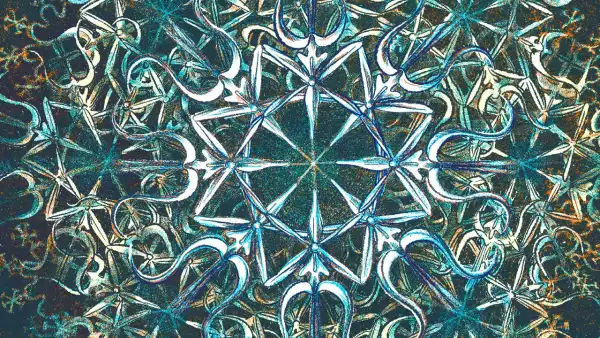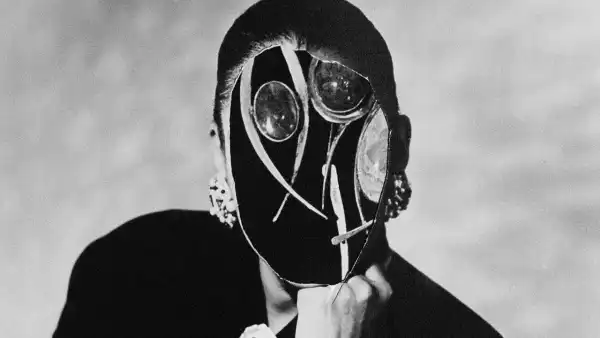
“What, art thou mad? Art thou mad?” Falstaff demands of Prince Hal, in Shakespeare’s “Henry IV, Part 1.” “Is not the truth the truth?” The joke, of course, is that he has been lying his head off, and the prince is in the process of exposing him as a liar.
In a time like the present, when reality itself seems everywhere under attack, Falstaff’s duplicitous notion of the truth seems to be shared by many powerful leaders. In the three countries I’ve spent my life caring about—India, the U.K., and the United States—self-serving falsehoods are regularly presented as facts, while more reliable information is denigrated as “fake news.” However, the defenders of the real, attempting to dam the torrent of disinformation flooding over us all, often make the mistake of yearning for a golden age when truth was uncontested and universally accepted, and of arguing that what we need is to return to that blissful consensus.
The truth is that truth has always been a contested idea. As a student of history, at Cambridge, I learned at an early age that some things were “basic facts”—that is, unarguable events, such as that the Battle of Hastings took place in 1066, or that the American Declaration of Independence was adopted on July 4, 1776. But the creation of a historical fact was the result of a particular meaning being ascribed to an event. Julius Caesar’s crossing of the Rubicon is a historical fact. But many other people have crossed that river, and their actions are not of interest to history. Those crossings are not, in this sense, facts. Also the passage of time often changes the meaning of a fact. During the British Empire, the military revolt of 1857 was known as the Indian Mutiny, and, because a mutiny is a rebellion against the proper authorities, that name, and therefore the meaning of that fact, placed the “mutinying” Indians in the wrong. Indian historians today refer to this event as the Indian Uprising, which makes it an entirely different sort of fact, which means a different thing. The past is constantly revised according to the attitudes of the present.
There is, however, some truth in the idea that in the West in the nineteenth century there was a fairly widespread consensus about the character of reality. The great novelists of that time—Gustave Flaubert, George Eliot, Edith Wharton, and so on—could assume that they and their readers, broadly speaking, agreed on the nature of the real, and the grand age of the realist novel was built on that foundation. But that consensus was built on a number of exclusions. It was middle-class and white. The points of view of, for example, colonized peoples, or racial minorities—points of view from which the world looked very different to the bourgeois reality portrayed in, say, “The Age of Innocence,” or “Middlemarch,” or “Madame Bovary”—were largely erased from the narrative. The importance of great public matters was also often marginalized. In the entire œuvre of Jane Austen, the Napoleonic Wars are barely mentioned; in the immense œuvre of Charles Dickens, the existence of the British Empire is only glancingly recognized.
In the twentieth century, under the pressure of enormous social changes, the nineteenth-century consensus was revealed as fragile; its view of reality began to look, one might say, fake. At first, some of the greatest literary artists sought to chronicle the changing reality by using the methods of the realist novel—as Thomas Mann did in “Buddenbrooks,” or Junichiro Tanizaki in “The Makioka Sisters”—but gradually the realist novel seemed more and more problematic, and writers from Franz Kafka to Ralph Ellison and Gabriel García Márquez created stranger, more surreal texts, telling the truth by means of obvious untruth, creating a new kind of reality, as if by magic.
I have argued, for much of my life as a writer, that the breakdown in the old agreements about reality is now the most significant reality, and that the world can perhaps best be explained in terms of conflicting and often incompatible narratives. In Kashmir and in the Middle East, and in the battle between progressive America and Trumpistan, we see examples of such incompatibilities. I have also maintained that the consequences of this new, argumentative, even polemical attitude to the real has profound implications for literature—that we can’t, or ought not to, pretend it isn’t there. I believe that the influence on public discourse of more, and more varied, voices has been a good thing, enriching our literatures and making more complex our understanding of the world.
And yet I now face, as we all do, a genuine conundrum. How can we argue, on the one hand, that modern reality has become necessarily multidimensional, fractured and fragmented, and, on the other hand, that reality is a very particular thing, an unarguable series of things that are so, which needs to be defended against the attacks of, to be frank, the things that are not so, which are being promulgated by, let’s say, the Modi Administration in India, the Brexit crew in the U.K., and the President of the United States? How to combat the worst aspects of the Internet, that parallel universe in which important information and total garbage coexist, side by side, with, apparently, the same levels of authority, making it harder than ever for people to tell them apart? How to resist the erosion in the public acceptance of “basic facts,” scientific facts, evidence-supported facts about, say, climate change or inoculations for children? How to combat the political demagoguery that seeks to do what authoritarians have always wanted—to undermine the public’s belief in evidence, and to say to their electorates, in effect, “Believe nothing except me, for I am the truth”? What do we do about that? And what, specifically, might be the role of art, and the role of the literary arts in particular?
I don’t pretend to have a full answer. I do think that we need to recognize that any society’s idea of truth is always the product of an argument, and we need to get better at winning that argument. Democracy is not polite. It’s often a shouting match in a public square. We need to be involved in the argument if we are to have any chance of winning it. And as far as writers are concerned, we need to rebuild our readers’ belief in argument from factual evidence, and to do what fiction has always been good at doing—to construct, between the writer and the reader, an understanding about what is real. I don’t mean to reconstruct the narrow, exclusive consensus of the nineteenth century. I like the broader, more disputatious view of society to be found in modern literature. But when we read a book we like, or even love, we find ourselves in agreement with its portrait of human life. Yes, we say, this is how we are, this is what we do to one another, this is true. That, perhaps, is where literature can help most. We can make people agree, in this time of radical disagreement, on the truths of the great constant, which is human nature. Let’s start from there.
In Germany, after the Second World War, the authors of what was called Trümmerliteratur, or “rubble literature,” felt the need to rebuild their language, poisoned by Nazism, as well as their country, which lay in ruins. They understood that reality, truth, needed to be reconstructed from the ground up, with new language, just as the bombed cities needed to be rebuilt. I think we can learn from their example. We stand once again, though for different reasons, in the midst of the rubble of the truth. And it is for us—writers, thinkers, journalists, philosophers—to undertake the task of rebuilding our readers’ belief in reality, their faith in the truth. And to do it with new language, from the ground up.
Sourse: newyorker.com






